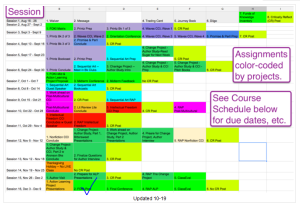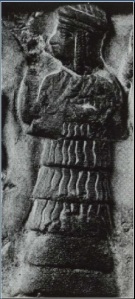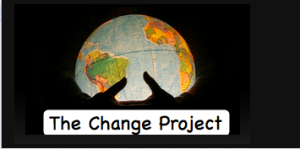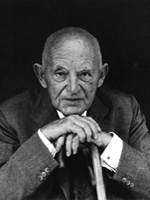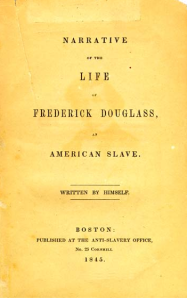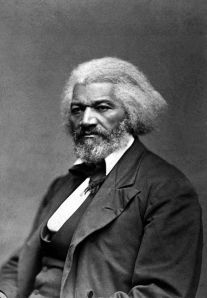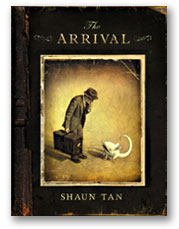What we call the beginning is often the end. And to make an end is to make a beginning. The end is where we start from. — T. S. Eliot
Have we really come to the end? It seems like we started a week ago and a hundred years ago all at the same time. I haven’t looked at my course goals in a while, so it was interesting to read through them again and reflect one last time on what we’ve accomplished in ECI 521.
Professional Goals
Beginning of Course Goals: Although my primary research interest is effective strategies for teaching writing, I am interested in expanding my knowledge of current trends in English Education. Although it’s an uncomfortable conversation, I think I need to address the prisonkeeper issue in this course. How do decisions about the literary texts we teach reflect important epistemological assumptions, and do those assumptions need adjustment? Are students imprisoned by traditional works of literature? Is it enough to expand the canon to include a wider range of voices? Do the voices need to include young adult literature? Does a curriculum based on young adult literature imprison students by failing to equip them to read complex texts associated with elitist education? Can young adult literature offer the same complexity as the works associated with the adult literary canon? What distinguishes a work as “young adult”? Professionally, I want to understand young adult literature in relation to the big questions that inform our teaching.
End of Course Assessment: As we come to the end of ECI 521, I have reached some degree of resolution about the prisonkeeper issue. I still have a lot to learn about YAL, but I have not yet found YA literature with the complexity and quality that I want in the works I teach. After much reflection, I have concluded that I can let go of the guilt complex: teaching canonical texts does not imprison my students. I have become more convinced that failing to teach the classics would do more to imprison students, limiting them to what they already know, rather than helping them discover complex texts with rich interpretive issues. My Action Learning Project revealed that a large number of my students enjoy YA literature and adult popular fiction, but I see no need to teach these texts. Based on the information my students provided me, they found YA literature without my help, and they don’t seem to need my help to make sense of them. Until I find more challenging, richer YA texts, it seems to make more sense to emphasize the reading and analysis of complex canonical texts that students would have more difficulty unpacking on their own.
There is another function of YAL literature, however, that I think can complement the study of canonical texts. YA literature seems to offer students more immediate access to meaning-making works without the cognitive challenge of the classics. Although YA literature offers a wide range of texts, common features seem to be simpler language, characters with whom students can relate, and, at least frequently, action-centered plots with a little edge to them. Without working too hard to figure out a text, teen readers can grapple with adult-size problems that they are beginning to grow into. The engaging plots, quick narrative pacing, and stylistic simplicity of much YA literature makes it useful for cultivating a love of reading. In my teaching role, I want to be sure my students are capable of unpacking the more complex canonical texts. Not all of my students will fall in love with those texts, however, and YA texts can serve an important function in helping many students make sense of their lives. A combination of extra-curricular and in-class book clubs seems a useful way to take advantage of what YA literature can offer. By continuing to emphasize canonical texts in my teaching but making a space for pleasure reading of a wider range of texts, it should be possible to create an environment responsive to Vygotsky’s zone of proximal development, social constructivism, and Rosenblatt’s Reader Response theory.
Literary Goals
Beginning of Course Goals: My literary goals overlap with professional goals, but are less epistemologically focused. Whether or not I conclude that I need to rethink the works that form the core of my curriculum, I would like to learn more about the books that my students are reading outside of class. I am also interested in evaluating the literary merit of young adult literature. This seemed less a dilemma when teaching sixth grade. As a teacher of college-bound 11th and 12th grade students, I would like a deeper understanding of what young adult literature has to offer that the literature that students are more likely to read in college does not provide. I am also interested in learning more about non-fiction texts for young adults.
End of Course Assessment: The Action Learning Project opened my eyes to a world of books I knew little or nothing about. Many of these texts would not interest me personally; my tastes are clearly nineteenth century when it comes to style. I appreciate contemporary literature as well, but a book needs to possess the poetry of Cormac McCarthy if I’m going to devote several hours to contemplating the darker side of human existence. Nonetheless, while one of my goals as a teacher is to be sure my students are capable of reading complex literary texts, it would be absurd for me to assume that they will adopt my reading tastes. I’ve just begun to investigate YA adult and adult contemporary texts my students are reading, but I now have a much better idea of the range of literature available and of their interests. Although I wasn’t overly impressed with the Printz titles I read this semester, the limited sample is hardly sufficient for drawing final conclusions. I’m willing to remain open to the possibility that high quality texts exist. This FOKI-post is an “End of Course,” not a final, assessment. Questions about the literary merit of YA literature will need to remain unresolved for now.
Our discussions of Common Core and our introduction to Marc Arononson’s nonfiction works gave me a much clearer sense of the latest trends in English education and the types of texts that are available. I don’t know that I would include texts like Aronson’s in my courses, but I might suggest his texts for supplementary or leisure reading — and I would certainly recommend Aronson for younger students. For college-bound high school juniors and seniors, moving on to the kinds of nonfiction texts students will read in college seems more appropriate. Teaching works recommended by Common Core like Paine’s “Common Sense,” the Declaration of Independence, and Frederick Douglass’ abolitionist texts seems more appropriate for my students (and I already include these in my AP 11 course, which emphasizes rhetorical analysis of nonfiction texts). Even though I teach in a private school setting and am not bound by Common Core, I am open to including more nonfiction in my British literature classes, but any move toward a 70/30 nonfiction/fiction split would need to take place as intended in Common Core — across all subjects.
One can only hope that local policymakers and principals will emphasize the need for students to read more complex nonfiction texts across the high school curriculum, not just in language arts. The issue deserves more space than I can give it here, but at the end of ECI 521, I have a much stronger sense of what the issues are, and I feel much more equipped to engage in the debate, which is certain to dominate discussions of curriculum for some time.
Technology Goals
Beginning of Course Goals: Although the focus in this course is on young adult literature, I’m eager to learn about new strategies for integrating technology in teaching literature. I’ve come a long way since my afternoon of disgust with the technology resources of the late 90s. I am still wary of frivolous uses of technology, but I am learning that the frivolousness of a technology application generally has more to do with decisions about how to use a tool than with the tool itself. Tweeting what you had for lunch seems rather frivolous to me, but following the Curiosity Rover might be useful for a science teacher. I am interested in learning about new technology resources and tools and evaluating how they might be useful in the English classroom. As more of the discussion in English Education begins to focus on non-print texts and new literacies, ECI 521 seems a good setting for evaluating tools from the students’ point of view. What makes some uses of technology frustrating? When are those frustrations healthy, and when would another teaching strategy or a different approach to integrating technology be more effective? The more complicated question to answer, perhaps, is how to integrate technology with literature instruction so that technology does not become the new curriculum. If students spend so long learning to use a tool or to create a product that they don’t have time to read, technology is no longer serving its purpose. One goal for this class is to gain practical experience that will better equip me to answer these sorts of questions.
End of Course Assessment: As I have commented in an earlier post, this course took an immersion approach to technology. Although my skill set has increased exponentially since I’ve been in this program, this course stretched me – especially in navigating the Wiki, adapting to class in Second Life, and creating videos. I still would prefer more linear instructions for projects (with main instructions on a single printable page and all the links I need included on that main instruction page), but I did eventually adapt to working in a paperless world. By the end of the course, I was working from the online instructions more than from my printed copies, and I had completely given up (in a good sense) on a printed copy of the Working Syllabus. Although the RAPs were enormously time-consuming, an important take-away from this class was that increasing opportunities for self-evaluation and an encouraging instructor can help alleviate the stress over learning to use new technologies. I wasn’t afraid to experiment because the course seemed to encourage taking risks, honesty about successes and failures, and the kinds of reflection that measure learning much more effectively than more traditional evaluation (of projects that would have never gone beyond the “safe”) could have done. Although the Wiki was more than a little overwhelming at first, I learned that an instructor’s encouraging tone can quickly establish trust and help students just take one step at a time. Scaffolding assignments is always pedagogically sound, but this is particularly true when using technology. This became more and more evident as we checked off assignments each week.
This is a rather I-centered evaluation when my initial goal was to learn more about teaching with technology, but my own feelings about using technology seem to be the most important factor in increasing my understanding of how to facilitate my students’ learning with technology. Even though I have had quite a few online courses before, those first few courses now feel like kindergarten next to this course’s immersive context. Oddly enough, though, the earlier courses were the ones where I had meltdowns. By this course, I knew enough to trust that I’d figure it out and to have some pretty good ideas about how to do that. Still, the constant reflection gave me lots of opportunities to think about where technology was frustrating me, where (often surprisingly) it was not, and strategies the instructor was using to model best practices and to scaffold the learning process for us. As I continue to think about technology tools to integrate in teaching literature, including tools that might facilitate collaboration between students, I have a much stronger sense of how to scaffold the use of technology tools.
Synthesis: Getting a Little Closer to Putting It All Together
As I read over my initial questions and thought about my conclusions, it might seem that I’ve moved nowhere. After spending weeks on the Change Project, I’m pretty sure that “change” is something that should have happened this semester. Although my answers to my original questions and my continuing unanswered questions might suggest that I haven’t changed much at all, nothing could be further from the truth. Traveling around the world may land adventurers back where they began, but they certainly are not the same after the journey.
I began this course unsure about whether my approach to teaching imprisoned my students, never having heard of the Printz Award, and interested in learning more about effective integration of technology in the curriculum. The course design was not all what I expected (I envisioned a course in which we read a slew of YA novels and pretended that we had become semi-experts in YA literature when all was said and done. You know, sort of the way we naively imagined we had become experts in British or American literature after those first 200-level survey courses in undergrad.) Instead, we became familiar with a few YA fiction and nonfiction texts, and we became much better equipped to ask fruitful questions and comfortable knowing how to evaluate the texts and teaching strategies we use for our individual teaching contexts.
Conversations in the blogosphere and in Second Life allowed veteran teachers and classmates with more recent experiences on the learners’ side of K-12 classrooms to share ideas and discover together that one-size-fits-all solutions do not exist. My current conclusions about the balance between YA literature and canonical texts would be tossed out if I were teaching in the classrooms where Curtis or Sarah teach. I remain committed to using technology to facilitate learning about literature, without allowing it to become the curriculum, and I feel more comfortable making decisions about how to make that happen. The students in the Eva Perry Mock Printz Club remain an inspiration and have convinced me that finding ways to help more young adults discover the joy of reading for pleasure is a goal I want to pursue for the future. While I have tried to leave my plans for book clubs flexible enough to give students ownership, I am looking forward to continuing to think about the ideas we have wrestled with individually and as a group this semester. And, addicted as I am to nineteenth century texts, I’m looking forward to making time for reading a few of the Young Adult works that inspired Mock-Printz-style enthusiasm from my own avid readers. I think I’m going to have to start with a little steampunk.
